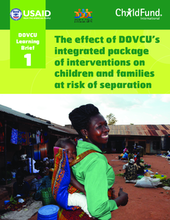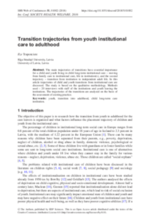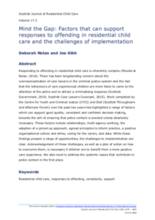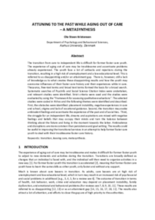Displaying 661 - 670 of 983
This report marks a critical step in compiling comparable data and information about children in out-of-home care in Asia, defining our understanding of the continuum of care options available and metaphors to identify the gaps, challenges, strengths and opportunities within the child care systems in 10 identified Asian countries.
This study and documentation of existing reintegration and alternative family care services in Cambodia was designed to build the capacity of existing service providers to take emerging good practice to scale as an increased number of residential care institutions transition.
This learning brief analyzes quantitative data from the first of the project’s stated objectives: examining the extent to which “Deinstitutionalization of Orphans and Vulnerable Children in Uganda” (DOVCU) project interventions decrease vulnerabilities for households and children at risk of separation.
In this article trajectories of child and youth transitions from institutional care are discussed.
This volume is an effort to highlight best practices for children without parental care.
This report aims to address some common and key themes emerging from a questionnaire and in-person meeting to discuss the role of the social service workforce in the inclusion of migrant children and young people.
This article highlights a range of factors which can support good quality, consistent and confident decision making, towards the aim of ensuring that care leavers' contact with police is avoided unless absolutely necessary.
This systematic review sought to address the lack of knowledge as to what creates setbacks and rejections during young people's transition out of care and how the youth may overcome influences of their foster care history and their experiences while in care.
This report looks at the nature and extent of the income and housing challenges faced by Tasmanian families who have had children removed by Child Safety Services, and the impacts those challenges may have on positive family reunification outcomes.
This factsheet for families offers tips for helping a child transition from foster care to adoption.









